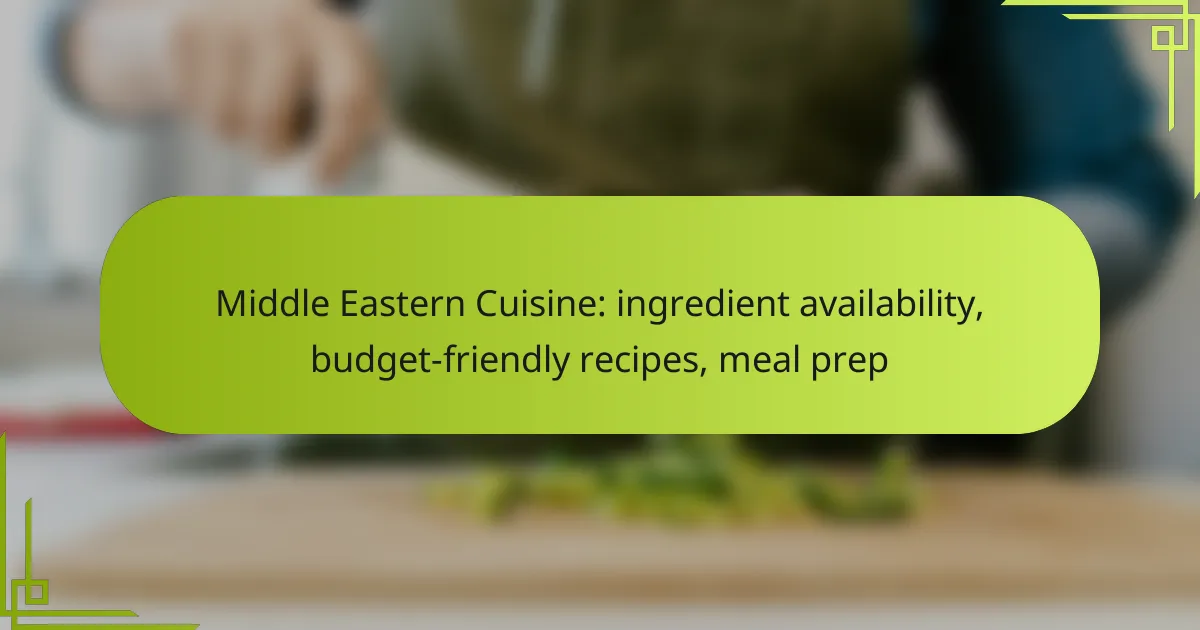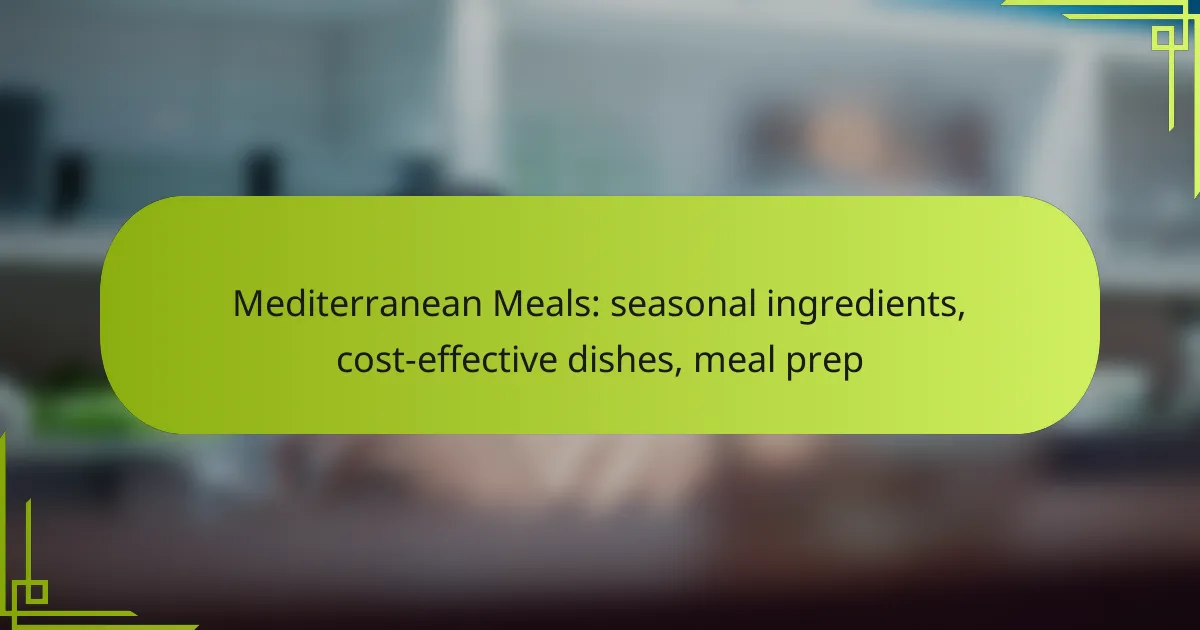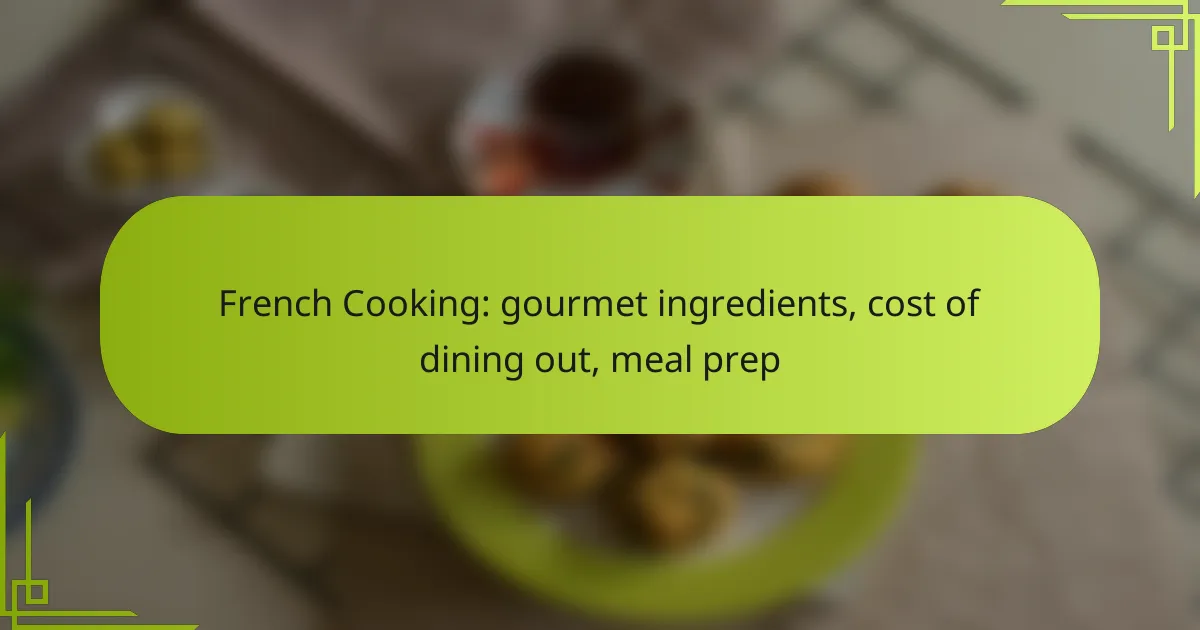Exploring Middle Eastern cuisine can be both budget-friendly and rewarding, as many recipes utilize affordable, nutritious ingredients. With options like chickpea salad and shakshuka, you can create satisfying meals without breaking the bank. Additionally, sourcing ingredients from specialized markets or online retailers enhances your cooking experience, while meal prepping allows for efficient use of time and resources, ensuring delicious flavors throughout the week.
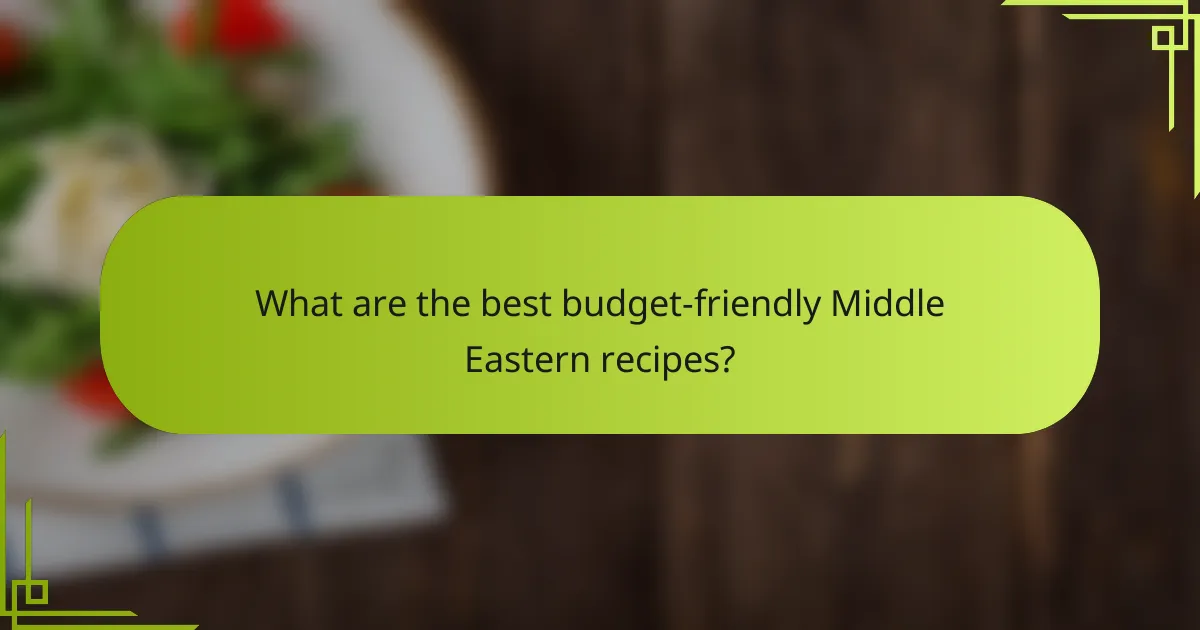
What are the best budget-friendly Middle Eastern recipes?
Budget-friendly Middle Eastern recipes often feature affordable ingredients that are both nutritious and flavorful. Dishes like chickpea salad and shakshuka can be made with minimal cost while still delivering satisfying meals.
Chickpea Salad
Chickpea salad is a versatile dish that combines canned or cooked chickpeas with fresh vegetables like cucumbers, tomatoes, and red onion. Toss in olive oil, lemon juice, and herbs such as parsley or mint for added flavor.
This salad is not only budget-friendly but also packed with protein and fiber, making it a filling option. You can easily customize it with seasonal vegetables or whatever you have on hand.
Shakshuka
Shakshuka is a one-pan dish featuring poached eggs in a spicy tomato sauce, often enhanced with bell peppers and onions. It’s a great way to use pantry staples like canned tomatoes and spices.
This meal is typically served with bread for dipping, making it both economical and satisfying. Prepare it in under 30 minutes, and it works well for breakfast, lunch, or dinner.
Lentil Soup
Lentil soup is a hearty and nutritious option that can be made with lentils, vegetables, and spices. It is inexpensive and can be prepared in large batches, making it ideal for meal prep.
Cook lentils with carrots, celery, and onions, and season with cumin and coriander for a Middle Eastern twist. This soup freezes well, allowing you to enjoy it later without extra cost.
Stuffed Bell Peppers
Stuffed bell peppers are a creative way to use leftover grains or proteins. Fill halved peppers with a mixture of rice, lentils, or ground meat, along with spices and herbs.
This dish is not only visually appealing but also allows for flexibility in ingredients based on what you have available. Bake them until the peppers are tender for a comforting meal.
Falafel Wraps
Falafel wraps are made with ground chickpeas mixed with herbs and spices, formed into balls, and fried or baked. They are a popular street food that can be made at home for a fraction of the cost.
Serve falafel in pita bread with tahini sauce, lettuce, and tomatoes for a filling meal. This dish is great for meal prep, as falafel can be made in advance and stored in the fridge or freezer.

Where can I find Middle Eastern ingredients in the UK?
Middle Eastern ingredients can be found in various locations across the UK, including specialized markets, online retailers, and larger supermarkets. Each option offers unique advantages in terms of selection, pricing, and convenience.
Local Middle Eastern markets
Local Middle Eastern markets are excellent places to find authentic ingredients such as spices, grains, and specialty items like tahini and za’atar. These markets often provide a wider selection than general grocery stores and may offer competitive prices.
When visiting, look for fresh produce, herbs, and traditional breads that are often imported directly from the region. Engaging with the staff can also lead to recommendations for lesser-known ingredients.
Online grocery stores
Online grocery stores have become increasingly popular for sourcing Middle Eastern ingredients, providing convenience and a broad selection. Websites like Ocado or specialty sites like Sous Chef offer delivery options that can save time and effort.
When ordering online, check for customer reviews and delivery fees to ensure you’re getting the best deal. Many sites also offer subscription services for regular deliveries of staple items.
Supermarkets with international sections
Many larger supermarkets in the UK, such as Tesco, Sainsbury’s, and Asda, have dedicated international sections where you can find Middle Eastern ingredients. These sections typically include canned goods, sauces, and some spices.
While the selection may not be as extensive as that found in specialized markets, these supermarkets often provide a convenient option for everyday cooking. Look for items like chickpeas, lentils, and pomegranate molasses in these aisles.
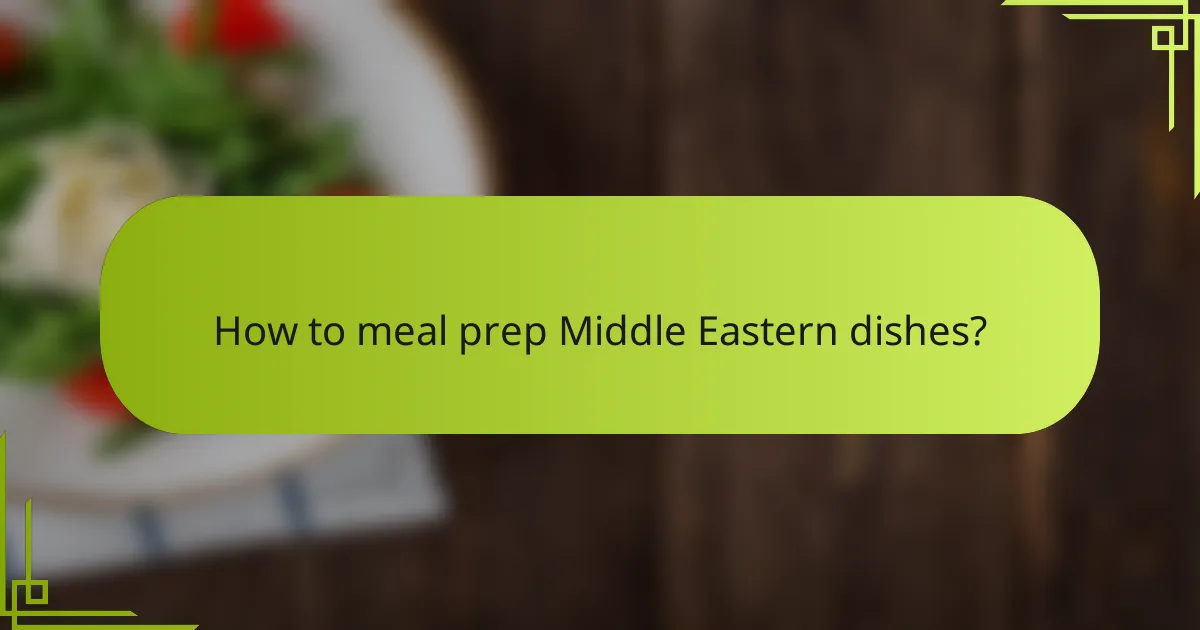
How to meal prep Middle Eastern dishes?
Meal prepping Middle Eastern dishes involves planning and preparing ingredients in advance to save time and enhance flavor. Focus on batch cooking staples like grains, proteins, and sauces, which can be easily combined for various meals throughout the week.
Batch cooking techniques
Batch cooking is essential for efficient meal prep. Start by cooking large quantities of staples such as rice, couscous, or bulgur, which can serve as a base for multiple dishes. Additionally, prepare proteins like grilled chicken, lamb, or chickpeas in bulk, allowing for quick assembly of meals later.
Consider using slow cookers or pressure cookers to save time and enhance flavors. For example, a large pot of lentil soup can be made in one go, providing several servings that can be used in different meals.
Storage tips for spices
Proper storage of spices is crucial to maintain their flavor and potency. Keep spices in airtight containers, away from direct sunlight and moisture. Glass jars or dark-colored containers work well to protect spices from light degradation.
Label your spices with the purchase date to ensure freshness. Generally, ground spices last about 6 months, while whole spices can last up to 2-3 years. Regularly check for any signs of loss in aroma or flavor, and replace as needed.
Freezing and reheating methods
Freezing is an excellent way to preserve prepared Middle Eastern dishes. Portion out meals in airtight containers or freezer bags, ensuring to remove as much air as possible to prevent freezer burn. Dishes like stews, curries, and stuffed vegetables freeze well and can be stored for several months.
When reheating, thaw meals in the refrigerator overnight for best results. Use the microwave or stovetop to reheat, adding a splash of water or broth to maintain moisture. Avoid reheating multiple times to preserve texture and flavor.
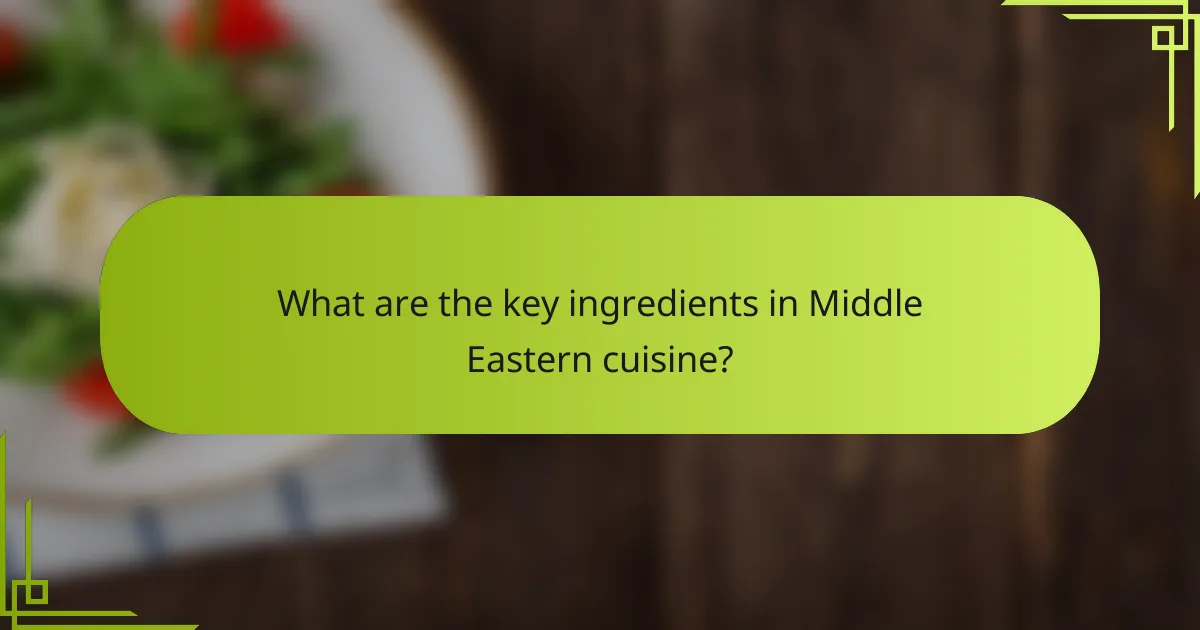
What are the key ingredients in Middle Eastern cuisine?
Middle Eastern cuisine is characterized by a variety of key ingredients that create its distinct flavors and textures. Essential components include spices, staples, and fresh herbs, which work together to define the region’s culinary identity.
Spices like cumin and coriander
Spices such as cumin and coriander are fundamental to Middle Eastern cooking, providing depth and warmth to dishes. Cumin has a nutty, peppery flavor, while coriander offers a citrusy note, making them versatile for both savory and sweet recipes.
When using these spices, consider toasting them lightly before adding to dishes to enhance their flavors. A common practice is to use ground cumin in stews and roasted vegetables, while coriander seeds can be added to spice blends like za’atar.
Staples like rice and bulgur
Rice and bulgur are staple grains in Middle Eastern cuisine, serving as the base for many meals. Rice, particularly varieties like basmati or jasmine, is often served alongside meats and vegetables, while bulgur, made from cracked wheat, is commonly used in salads and pilafs.
For budget-friendly meal prep, consider cooking larger batches of these grains at once. They can be stored in the refrigerator for several days and used in various dishes, such as tabbouleh or as a side for kebabs.
Fresh herbs like parsley and mint
Fresh herbs, particularly parsley and mint, play a crucial role in adding brightness and freshness to Middle Eastern dishes. Parsley is often used in salads, while mint can elevate both savory and sweet dishes with its refreshing flavor.
Incorporate these herbs into your meals by adding them at the end of cooking or as a garnish. A simple tabbouleh salad made with bulgur, parsley, and mint is a great example of how these herbs can enhance a dish’s flavor profile.

How to choose the right recipes for meal prep?
Choosing the right recipes for meal prep involves considering your cooking time, ingredient availability, and budget. Focus on recipes that are easy to scale and store well, ensuring they fit your schedule and dietary needs.
Consider cooking time
Cooking time is a crucial factor when selecting meal prep recipes. Aim for dishes that can be prepared in under an hour, especially if you plan to batch-cook multiple meals. This allows you to maximize efficiency and minimize time spent in the kitchen.
When evaluating recipes, consider the total time from prep to cooking. Recipes that require minimal chopping or can be cooked in one pot can save significant time. For example, stir-fries or sheet pan meals often take less than 30 minutes to prepare and cook.
To streamline your meal prep, prioritize recipes that can be made in bulk and stored easily. Dishes like soups, stews, and casseroles not only cook quickly but also reheat well, making them ideal for busy weeks.






